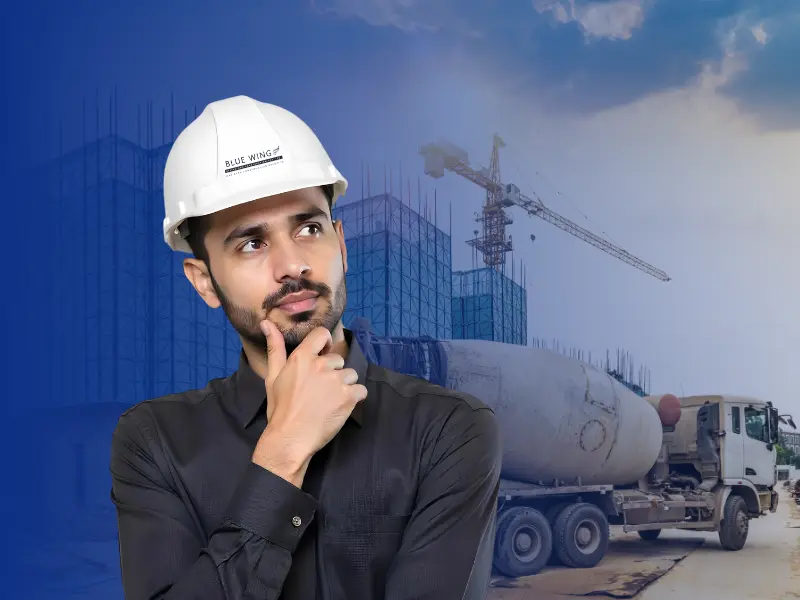Ready-Mix Concrete (RMC) has revolutionized how India builds. From faster construction cycles to improved quality and safer work environments, RMC brings undeniable advantages. But adopting it seamlessly across the country isn’t always straightforward. On-ground challenges, especially in the context of Indian infrastructure, climate, and construction culture – need to be acknowledged and addressed.
This blog focuses on the practical hurdles faced by builders and developers when using RMC and what it will take to overcome them. We’ll also look at where RMC is headed in the evolving landscape of Indian construction.
The Ground Reality: Common Challenges in Using RMC on Indian Construction Sites
RMC offers many clear benefits, but adopting it across Indian construction projects isn’t always seamless. Builders (especially in fast-paced or congested urban projects) face multiple on-ground hurdles that need to be understood before implementation.
1. Supply Chain Constraints
- Transportation Challenges: Limited transportation infrastructure in remote areas and traffic congestion in urban centers
- Supply Chain Disruptions: Weather-related and logistical disruptions affecting timely delivery
2. Market and Economic Pressures
- Cost Comparison Misconceptions: Direct cost comparison with site-mixed concrete without considering total lifecycle benefits
- Intense Competition: Price wars among suppliers affecting profit margins and service quality
- Economic Sensitivity: Construction industry’s vulnerability to economic downturns affecting demand
- Payment Delays: Extended payment cycles affecting the cash flow and operations
3. Weather-Related Challenges
- Temperature Extremes: Hot and cold weather conditions affecting concrete performance
- Monsoon Impact: Heavy rainfall during curing process causing surface defects and quality issues
- Humidity Effects: High humidity slowing drying process and low humidity causing surface cracking
- Seasonal Demand Fluctuations: Weather-dependent construction activities creating uneven demand patterns
4. Technical Expertise and Training
- Skilled Labor Shortage: Lack of trained personnel for handling RMC operations
- Knowledge Gaps: Insufficient understanding of proper RMC usage among contractors and site engineers
- Technology Adoption: Slow adoption of advanced technologies for automation and quality control
- Best Practices: Limited awareness of international best practices and modern techniques
5. Infrastructure and Logistics
- Plant Location: Strategic positioning of plants to minimize transportation time and costs
- Fleet Management: Maintaining adequate mixer truck capacity and managing delivery schedules
- Traffic Congestion: Urban traffic conditions affecting timely delivery and concrete workability
- Remote Area Access: Challenges in serving construction sites in remote or difficult-to-access locations
Recommendations for Industry Stakeholders
To fully realize RMC’s potential, industry players must address these challenges proactively.
For RMC Producers:
- Invest in technology upgrades and automation
- Strengthen supply chain partnerships
- Enhance quality control systems
- Expand geographic presence strategically
For Construction Companies:
- Improve site preparation protocols
- Invest in staff training and education
- Develop weather-responsive construction schedules
- Strengthen partnership with reliable RMC suppliers
For Government and Regulators:
- Streamline regulatory processes
- Promote standardization across states
- Support infrastructure development for better connectivity
- Encourage sustainable construction practices
Where RMC is Headed in Indian Construction
India is moving toward faster, smarter, and more sustainable construction. RMC is no longer a premium add-on, it’s becoming foundational. With urban expansion, infrastructure push, and demand for better build quality, RMC is poised to grow beyond just metros and megaprojects.
Government-led smart city missions, large-scale housing initiatives as well as growing environmental regulations are all moving the industry toward more standardized and traceable construction practices. That is something RMC supports inherently. Add to that the rise of automated batching, digital fleet tracking, and mix design customization, and it’s clear: RMC is not just keeping pace with the future; it’s helping to shape it.
Conclusion
Ready-Mix Concrete (RMC) is a strategic shift in how India builds. The on-ground challenges are real, but they are solvable. RMC can be used more effectively across projects of all scales with thoughtful planning, better collaboration across stakeholders and continued investment in the infrastructure.
As India pushes forward with rapid urbanization, infrastructure upgrades, and sustainability goals, RMC stands out as a solution that’s not just efficient, but essential. Companies that embrace this shift while addressing its operational realities will be better positioned to deliver projects faster, safer, and smarter.
At BlueWing DCPL, we believe that technology-backed, quality-driven construction is the way forward. And RMC is a powerful step in that direction, when implemented with the right expertise.
